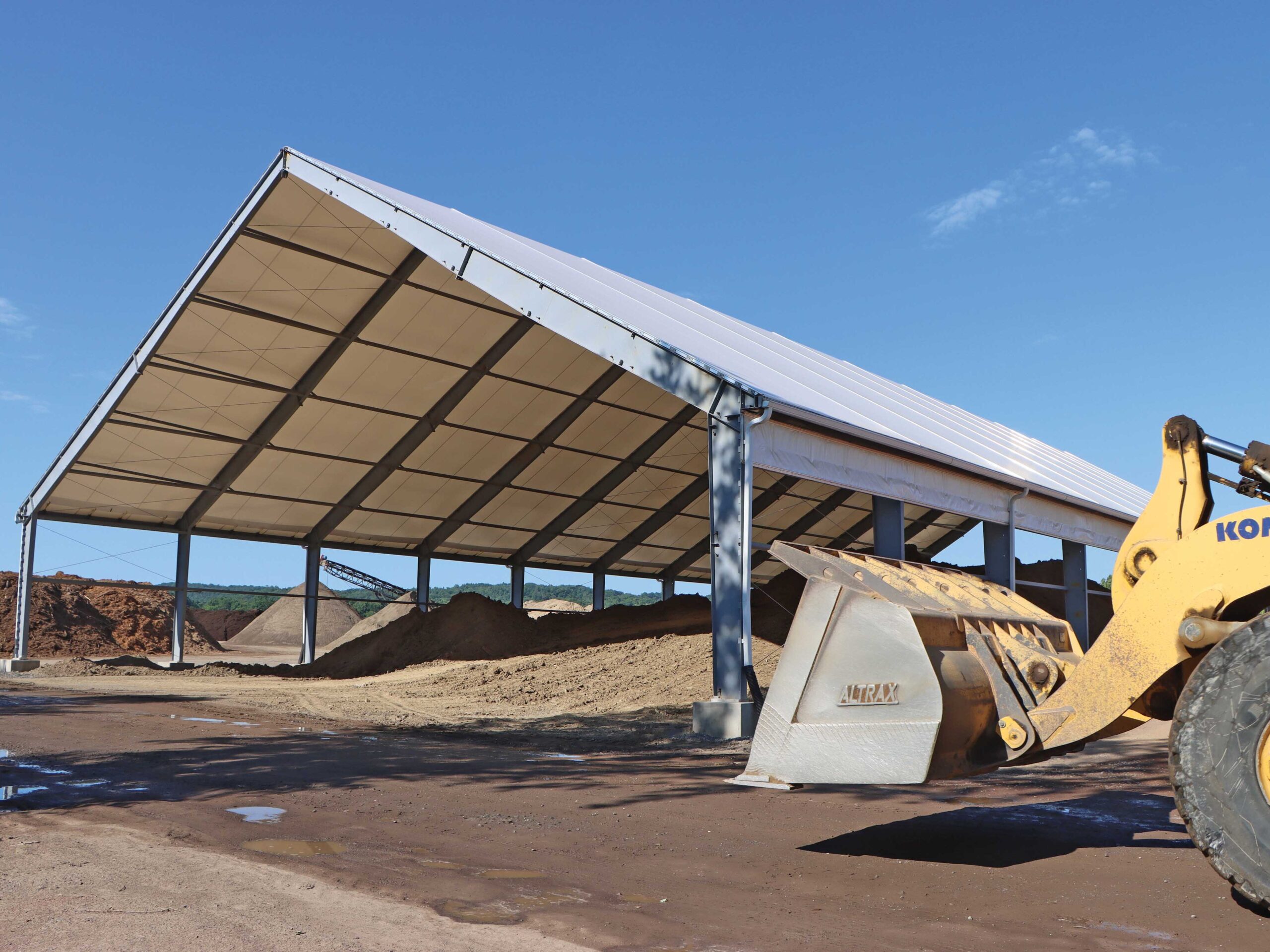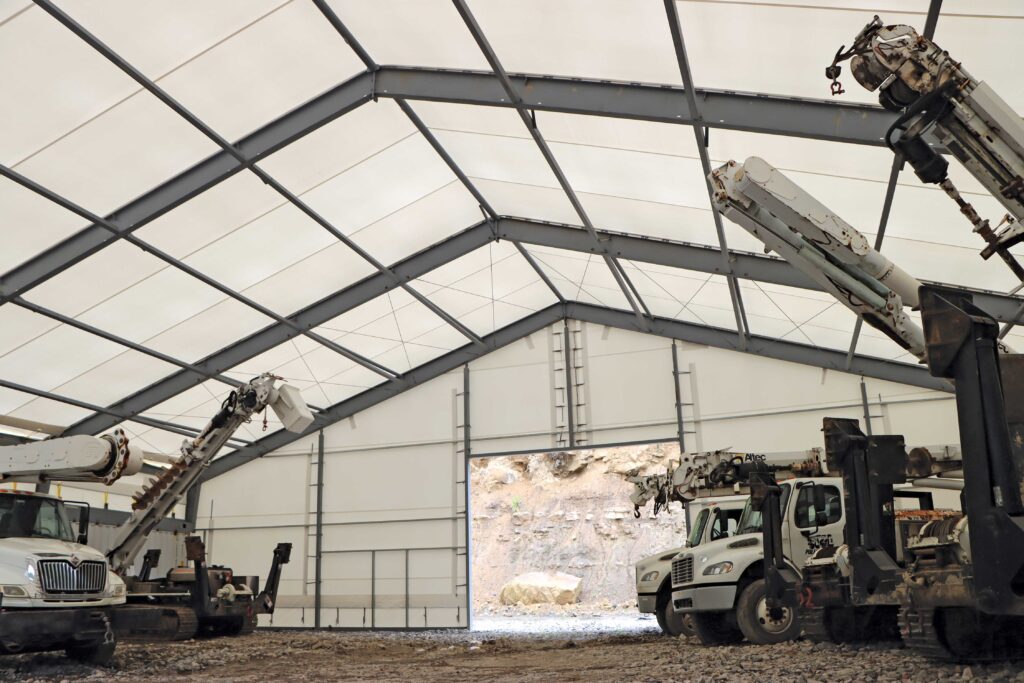Sustainable Fabric Structures: An Eco-Friendly, Energy-Efficient Fabric Building
Sustainability and environmental consciousness are more important now than ever before, and operations across all industries are trying their best to adapt to new, greener standards. While the building industry as a whole has not been the most eco-friendly in the past, sustainable practices are becoming more commonplace in an effort to promote change.
This has brought a notable shift in the types of structures operations look for, with many opting for a more energy-efficient and environmentally friendly solution, rather than a traditional wood or concrete building. In particular, a number of businesses are turning to fabric structures as a way of improving their operation’s sustainability.
Sustainable fabric structures present an ideal solution, because they can offer a faster, less invasive construction process, help reduce energy requirements and even incorporate recyclable materials into their design. By obtaining an energy-efficient fabric building from ClearSpan, operations can take advantage of sustainable building practices that limit their impact on the environment, as well as save on upfront and long-term expenses.
Why Do Sustainable Building Practices Matter?
By nature, the building industry has a significant impact on the environment, so incorporating sustainable practices can be a great way for manufacturers to conserve natural resources and reduce emissions. Although adopting these practices is not without its challenges, companies who have the right infrastructure in place can produce buildings using fewer materials and less labor, without sacrificing on quality or reliability.
In the case of fabric buildings, this can also help businesses using the structure to run a more sustainable operation. Completing their project through ClearSpan, businesses will have less of an effect on the surrounding landscape and can dramatically cut their energy usage, limiting their carbon footprint over time.

Sign Up Now For More Information
STREAMLINED CONSTRUCTION AND INSTALLATION
The construction process for fabric structures differs greatly from that of a more conventional building. These steel-frame buildings are generally manufactured in prefabricated components, which means they are made in a separate facility, and then shipped and assembled at a desired site.
As a result, they can be erected in a much shorter time frame than structures that employ other raw materials, like wood or concrete. These components are heavier, take a significant amount of time and energy to construct and generally require more sitework.
Conversely, fabric buildings can take advantage of versatile foundation options, which require little to no site preparation. ClearSpan’s exclusive helical anchoring system is one of the most notable and environmentally friendly solutions.
Helical anchors drill directly into the ground with minimal excavation, limiting the damage to the landscape where the building is being constructed. These anchors enable the building to be taken down and relocated quickly as well, without disturbing or harming the surrounding environment.
The clear span design that ClearSpan’s sustainable fabric structures are known for also makes their construction more eco-friendly. When employing a truss frame, these buildings offer wide-open interiors that don’t feature any support posts, thus using less material than a traditional building.
THE IDEAL ENERGY-EFFICIENT FABRIC BUILDING
ClearSpan’s sustainable fabric structures are known for their energy-efficiency. Traditional buildings require artificial lighting inside to keep them lit, consuming large amounts of energy and driving up utility costs.
Fabric buildings, on the other hand, do not need supplemental lighting during the day, as the fabric cover allows natural light to filter into the structure. This drastically reduces the energy usage of the structure, and in turn, limits utility costs. At first, it might seem like becoming a more energy-efficient business would be costly, but fabric buildings prove it can actually be economical.
ClearSpan’s 12.5 oz. polyethylene fabric covers are also climate-sensitive. This means the interior of the structure stays cooler in the summer and warmer in the winter, keeping the building at a comfortable temperature, no matter the season. This feature also lowers energy consumption and the subsequent costs by eliminating the need for HVAC systems to run unnecessarily.
Additionally, the fabric cover limits how much air escapes the interior, which adds to its climate-sensitivity. The structure is tightly sealed around the opening, keeping cold air out in the winter and hot air out in the summer.

This also ensures a business’s heating and cooling remains inside the structure, so all of their money is not—literally—going out the window. ClearSpan can even insulate their fabric structures, which is especially useful for businesses in colder climates looking to bolster energy savings.
RECYCLABLE MATERIALS
Sustainable fabric structures are incredibly durable, so they will last decades without needing to be replaced, while also helping to reduce maintenance costs. Both ClearSpan’s fabric covering options, 12.5 oz. polyethylene and the Armor Shield Cover, are strong and dependable.
The 12.5 oz. cover has a rip-stop weave, which stops tears in their tracks and keeps them from spreading. The Armor Shield Cover incorporates seven layers for added durability, and has been extensively tested to ensure it lasts decades. To support this, both cladding options are backed by industry-leading 20 and 30 year warranties.
In the event that a fabric structure is taken down, ClearSpan’s 12.5 oz. cover is 100 percent recyclable. This ensures that if the building is deconstructed, the cover will be recycled, rather than thrown away. By limiting wasted materials, these buildings provide sustainability in the long run with a lower carbon footprint.
All in all, fabric structures are far more environmentally friendly and sustainable than a traditional building. From construction to use to demolition, these buildings are eco-friendly throughout their entire lifespan.
It is paramount for businesses to consider the environmental impact of their operation, especially now. A sustainable fabric structure is a minimal change that can make a significant impact, all while saving businesses money as they take care of the planet.
To learn more about ClearSpan’s sustainable fabric structures or to get your own energy-efficient fabric building, call or
Request A Quote
Related Articles
The Advantages Of Natural Lighting In Fabric Structures
One advantage businesses gain when they choose fabric cladding is abundant natural light, and while it may not be the most prominent feature, its benefits are becoming hard to ignore.
Sustainable Warehousing With Fabric Structures
Warehouses are becoming more innovative in their attempts at being eco-friendly, turning to options like automation and retrofitting to become greener.
The Ultimate Guide To Metal Frame Buildings: Creating Your Steel Frame Structure
In this guide we’ll go over the basics, from common building components to designing a structure for peak efficiency, and make sense of the process to simplify the integration of a new steel frame structure into any facility.
Why Every Business Needs A Fabric Structure
Fabric structures are a fantastic alternative to a conventional structure, as they are durable, cost-effective and energy efficient.

